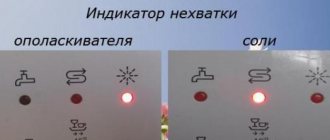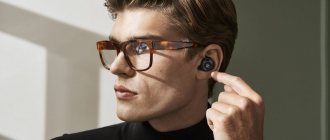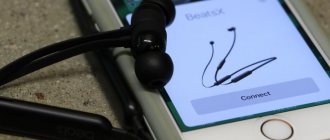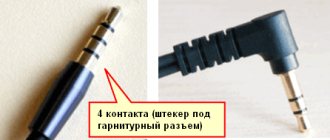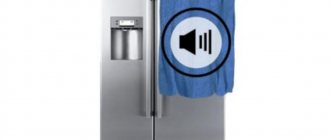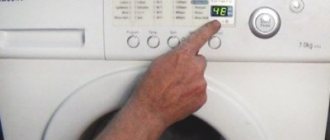Headphones are a necessary attribute of a modern person, without which it is already difficult to imagine everyday life. With their help, we can listen to music, communicate with each other, watch movies and other video files that are not only entertaining, but also necessary for work.
But sometimes you have to deal with breakdowns or other troubles, such as too quiet a sound, the appearance of strange noises or dull sound. Don’t rush to throw away your headphones and buy new ones—you can try to solve the problem yourself. You will learn how to do this in this article.
A little theory
Any speaker system consists of standard components:
- signal source,
- sound emitter,
- sound amplifying elements,
- the volume over which sound travels
- the external environment in which the speaker system is located.
Each element contributes.
And it doesn’t matter at all what plays the role of this or that element in the type of acoustic system (AS) under consideration. For example, for closed (monitor) headphones, the main role is played by the closed volume of air between the auricle and the speaker, since the external environment is a small volume of air behind the speaker, closed by a cup.
In this case, it is not customary to take the external environment as an additional factor; it only works for some development masters. Even if it is connected to the volume of air inside the earphone by bass reflex holes.
Open headphones almost completely copy the operation of desktop speaker systems, differing only in the distance to the listener and the absence of sound reflections from the walls. But there are reflections from and in the auricle, often stronger than in tabletop or floor-standing speakers.
Solder break repair
In this case, again, you can solve the problem yourself. If you understand how the headphones work, you can try taking them apart to replace the soldering. But this solution is not always possible, since some headset models are non-separable. During the repair process, the user may damage other elements that cannot be repaired.
Therefore, in this case, you can also contact a service center or purchase new headphones.
What makes a pleasant sound?
The source determines the quality of the audio stream.
If the transformation of information into acoustic waves is accompanied by distortions, or the information itself is not very detailed, the quality will not be visible. A correctly selected “speaker + horn + volume” radiating system has no less impact. Maybe even more: I've come across many speakers that make low-quality mp3s sound better; and no less those that easily spoil even the most saturated flac made from a master recording.
It is the radiating system that determines the nature of the radiation and reflections of sound waves. The wider the reproduced frequency range, the more we will hear (sounds outside the audible range are also important). The greater the sensitivity, the faster and more accurately they reproduce sound.
Reinforcing elements - sound guides, all kinds of horns. For dynamic drivers, this can even include the speaker membrane itself, and even more so the damping elements through which the speakers are attached to the housings. Light movement provides fast response and high volume, but can amplify unwanted frequencies and lead to unpleasant resonances.
The mesh in front of the speaker not only protects it, but also affects the frequency range. It can even contribute to the sound due to parasitic resonances - or act as a filter for sounds that are too harsh.
The volume of air in which the waves are created is surrounded by walls. On one side is the auricle, on the other is the body of the headphones. They can amplify, reflect unchanged, or dampen waves of certain frequencies.
The absence of a wall behind the speaker makes the sound more transparent, more spacious - but flatter and quieter. The holes can both remove excess sound pressure and dampen unwanted frequencies.
The ear pads not only isolate from external noise. They create an isolated volume of air for the circulation of sound waves: they can reflect, they can dampen.
What and how affects the sound is now approximately clear. Let's try to look at the main methods of improvement. It will work with any overhead, the sound will change in the desired direction.
Sound insulation: ear pads and cups
Any ear pads have only one common quality: they deteriorate over time, even if it’s not noticeable. Compare with new ones. Maybe it will turn out that after six months or a year they become softer, more comfortable, and the sound has become softer.
But more often the opposite situations happen: the material has become loose, the height has decreased, and the compositions take on a cotton-like shade.
The simplest modification to any over-ear (or any other) headphones is replacing the ear pads. There are no rules when changing - you have to search and experiment. Not only each manufacturer, but also each series (if it’s not like a huge audio holding company) can have its own properties.
Therefore, when replacing there are no rules. The main thing is that the material provides not only a comfortable fit, but also shades of sound: dense leather better reflects audio waves (adds volume), fine-pored dense filling works more effectively as a sound insulator and “increases” the volume of low frequencies.
Soft ear pads muffle sound. This is especially true when filled with fibrous materials. But they are much nicer for everyday wear.
By the way, no one bothers you to choose monitor ear pads for a compact model of headphones: either by fitting store-bought ones of a different size, or by adapting suitable ones from another manufacturer. In addition to convenience, Cheburashkas always sound “richer” - re-reflections of sound.
Lack of current sound driver
A common cause of noise in Bluetooth headphones is a problem with the control program (driver) for the sound card.
A driver, like any program, needs error correction and adjustments.
Therefore, for flawless operation of the sound card and clear sound in wireless headphones, it is necessary to install the latest version of the driver from the official website of the device manufacturer.
How to check the availability and relevance of drivers?
To check if the latest sound driver is installed on your computer, you need to:
- enter the “My Computer” folder, go to the “Device Manager” section;
- in the window that appears, select the “Sound, video and gaming devices” column;
- Find your computer's sound card in the list that opens.
If there is an exclamation mark next to the sound card, the computer driver needs to be updated. But even in the absence of a warning, it would be better to reinstall the control program.
Driver setup
To update the computer driver, right-click on the line with the name of the sound card.
Next, select “Update driver”, and then allow the wizard to automatically search for updated drivers on the Internet.
In the same way, you can check and update the sound driver for wireless headphones.
You can configure your computer's sound card using auxiliary programs, the most popular of which is DriverPack Solution.
Modifying cups
With ear pads everything is simple and rather uninteresting. The “upgrade” of the cups that house the speakers is more interesting. It all depends on personal imagination and the ultimate goal. For example, cheap monitor headphones can be turned into an absolute isolator from the outside world. It is enough to line the inside of the earcup with high-quality sound-insulating material.
Izolon or any car Shumka will do. In addition to sound insulation, this mod makes the low frequencies more saturated, while muffling the high ones.
Another interesting way to change the sound is to refuse the cups, take them off. Open headphones sound into the surrounding space, air flow. This is why open headphones sound brighter than closed ones with equal parameters.
It is better not to experiment with holes on the cup. Most often they are designed in a special way; a change can have a negative impact. A ringing or noise will appear - parasitic sounds.
Finally, the most hardcore modding: making your own cups. If you replace the plastic with wood (some craftsmen use ready-made cups for drinking) or thicker and harder plastic, you can turn even budget headphones into very good monitors.
A small danger lies in the details: the wood resonates, and unwanted resonances may appear. In the absence of suitable equipment, it is very difficult to track its presence, and the sound may be spoiled.
Headphones have become quieter: possible problems, ways to fix them, reviews
You can increase the headphone volume using third-party programs and applications or systemically, using built-in utilities (engineering menu) . Let's consider options for amplifying sound in wired and wireless headphones if the sound is quiet. On phone (Android and iOS) and computer (Windows 10 and 7)
The instructions are relevant for PCs, players and phones Smasung, Xiaomi and any other phones on Android/iOS (iPhone).
Not all sound amplification items are required to be used. You should move on to the next one only if the previous one does not solve the problem. .
We do not recommend systematically raising the volume of your headphones and devices (although there are instructions for this below). We also do not recommend listening to headphones at high volume for a long time and often. Take care of your hearing!
⭐ Prices for the best wired headphones in 2021:
We are finalizing sound guides and other sound guides
The speaker is rarely attached directly to the ear cup. And the plate on which it is placed is, in good models, secured through a gasket made of paper or other material. Here’s another “mod”: by making a gasket between the two parts of the earphone, you can improve the insulation or partially change the sound.
Paper does not provide complete insulation, but it does not muffle the sound or erase the upper range (yes, crevices can also play a role in the sound). If you use felt, you can achieve complete insulation. At the same time, the bass will become brighter, but slightly duller.
By the way, if you “cover up” the extra holes and cracks with epoxy or some kind of natural glue, you can get a similar (but different) result. Options can be combined.
The emitter protection is also undergoing changes. Manufacturers install plastic grilles to save money. By replacing them with a metal mesh covered with thin paper for filtration, the sound of any model can be radically changed. For the better.
Such a “feint” will not work with expensive models: most likely, the manufacturing company was concerned with the sound design, and all the holes in front of the speaker appeared as a result of calculations. There is a risk of damage if the protection is not removable.
Causes of breakdowns
First, it is important to understand the causes of the problems: what they may be and what to expect from them.
If the headphones play quieter, it means that the problem may be due to improper use. Of course, it is unlikely that anyone will deliberately dip the headset in water or throw it in the sand. All this will undoubtedly lead to problems with which, most likely, nothing can be done.
But there are minor breakdowns that can interfere with the functionality of the device. For example, the headphones began to play quieter because drops of water got on them, etc.
